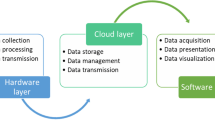Abstract
This paper describes a teaching-learning sequence (TLS) about air pollution and the findings resulting from its implementation by pre-service elementary teachers (PET) currently undergraduate students of the Department of Primary Education in the National and Kapodistrian University of Athens, Greece. The TLS focused on the relation of air pollution with wind and topography in local conditions. An authentic context was provided to the students based on daily up-to-date meteorological data via the Internet in order to estimate air pollution. The results are encouraging given that PET can correlate wind and concentration of air pollutants through reading specialized angular diagrams and weather maps, can recognize the correlation of topography in the concentration of air pollutants, and can describe temperature inversion. However, the PET demonstrated clear difficulties in ability of orientation, in wind naming, and in interpretation of symbols on weather map. Finally, the implications on teaching air pollution are discussed.




Similar content being viewed by others
References
Boyes E, Stanisstreet M, Spiliotopoulou-Papantoniou V (1999) The ideas of Greek high school students about the “ozone layer”. Sci Educ 83(6):724–737
Boyes Ε, Myers G, Skamp K, Stanisstreet M, Yeung S (2007) Air quality: a comparison of students’ conceptions and attitudes across the continents. Compare: A journal of comparative education 37(4):425–445
Brown F (2000) The effect of an inquiry-oriented environmental science course on preservice elementary teachers’ attitudes about science. J Elem Sci Educ 12(2):1–6
Bybee RW (2000) Teaching science as inquiry. In: Minstrell J, van Zee EH (eds) Inquiring into inquiry learning and teaching in science. American Association for the Advancement of Science, Washington, DC, pp. 20–46
Chinn CA, Hmelo-Silver CE (2002) Authentic inquiry: introduction to the special section. Sci Educ 86(2):171–174
Cohen L, Manion L, Morrison K (2007) Research methods in education, 6th edn. Routledge Publishers, Oxford
Cunningham WP, Cunningham MA (2008) Environmental science: a global concern, 10th edn. McGraw-Hill, New York
Dillon J, Scott W (2002) Editorial—perspectives on environmental education-related research in science education. Int J Sci Educ 24(11):1111–1117
Dove J (1998) Alternative conceptions about the weather. Sch Sci Rev 79(289):65–69
Edelson DC (2007) Environmental science for all? Considering environmental science for inclusion in the high school core curriculum. Sci Educ 16(1):42–56
Henriques L (2002) Children’s ideas about weather: a review of the literature. Sch Sci Math 102(5):202–215
Hespanha SR, Goodchild F, Janelle DG (2009) Spatial thinking and technologies in the undergraduate social science classroom. J Geogr High Educ 33(S1):17–27
Hewitt CN, Jackson A (2003) Handbook of atmospheric sciences—principles and applications. Blackwell Publishing, Oxford
Howitt D, Cramer D (2001) A guide to computing statistics with SPSS for windows version 10. Pearson Education Limited
Kahl JDW (2001) Weather forecasting using the Internet. Sci Teach 2001:22–25
Khalid T (2001) Pre-service teachers’ misconceptions regarding three environmental issues. Can J Environ Educ 6:102–120
Lalas D, Asimakopoulos D, Deligiorgi D, Helmis C (1983) Sea breeze circulation and photochemical pollution in Athens, Greece. Atmos Environ 17(9):1621–1632
Lee J, Bednarz R (2009) Effect of GIS learning on spatial thinking. J Geogr High Educ 33(2):183–198
Lee H-S, Butler-Songer N (2003) Making authentic science accessible to students. Int J Sci Educ 25(8):923–948
Linn MC (1998) The impact of technology on science instruction: historical trends and current opportunities. In: Fraser BJ, Tobin KG (eds) International handbook of science education. Kluwer Academic Publishers, Dordrecht, pp. 265–294
Mandrikas A, Skordoulis C, Halkia K (2013a) Pre-service elementary teachers’ conceptions about wind. Int J Sci Educ 35(11):1902–1924
Mandrikas A, Parkosidis I, Psomiadis P, Stoumpa A, Chalkidis A, Mavrikaki E, Skordoulis C (2013b) Improving pre-service elementary teachers’ education via a laboratory course on air pollution: one university’s experience. J Sci Educ Technol 22(2):113–123
Means B (1998) Melding authentic science, technology, and inquiry-based teaching: experiences of the GLOBE program. J Sci Educ Technol 7(1):97–105
Meyer S (2006) A new perspective on surface weather maps. Science Activities 42(4):3–9
Minstrell J, Van Zee EH (eds) (2000) Inquiring into inquiry learning and teaching in science. American Association for the Advancement of Science, Washington, DC
Moussiopoulos N, Papalexiou S, Sahm P (2006) Wind flow and photochemical air pollution in Thessaloniki, Greece. Part I: simulations with the European Zooming Mode. Environ Model Softw 21:1741–1751
Myers G, Boyes E, Stanisstreet M (2004) School students’ ideas about air pollution: knowledge and attitudes. Research in Science and Technological Education 22(2):133–152
Osborne J, Dillon J (eds) (2010) Good practice in science education: what research has to say, 2nd edn. McGraw-Hill & Open University Press, New York
Papadimitriou V (2004) Prospective primary teachers’ understanding of climate change, greenhouse effect, and ozone layer depletion. J Sci Educ Technol 13(2):299–307
Skamp K, Boyes E, Stanisstreet M (2003) Teaching about air quality. Aust Sci Teach J 49(2):12–21
Skamp K, Boyes E, Stanisstreet M (2004) Students’ ideas and attitudes about air quality. Res Sci Educ 34(3):313–342
Skordoulis C, Sotirakou M (2005) Environment: science and education. Leader Books, Athens (in Greek)
Songer NB (1996) Exploring learning opportunities in coordinated network-enhanced classrooms: a case of kids as global scientists. Journal of the Learning Sciences 5(4):297–327
Thornber J, Stanisstreet M, Boyes E (1999) School students’ ideas about air pollution: hindrance or help for learning? J Sci Educ Technol 8(1):67–73
Ucar S, Trundle KC, Krissek L (2011) Inquiry-based instruction with archived, online data: an intervention study with preservice teachers. Res Sci Educ 41(2):261–282
UNESCO (2005) UN decade of education for sustainable development 2005–2014, draft international implementation scheme. UNESCO, ED/2005/PI/H/1, Paris
Varotsos CΑ, Efstathiou MΝ, Kondratyev ΚΥ (2003) Long-term variation in surface ozone and its precursors in Athens, Greece—a forecasting tool. Environ Sci Pollut Res 10(1):19–23
Whittaker TM, Ackerman SA (2002) Interactive web-based learning with Java. Bull Am Meteorol Soc 83(7):970–975
Author information
Authors and Affiliations
Corresponding author
Appendix
Appendix
Pre-test questionnaire: wind, topography, and air pollution


Post-test questionnaire: wind, topography, and air pollution


Rights and permissions
About this article
Cite this article
Mandrikas, A., Stavrou, D. & Skordoulis, C. Teaching Air Pollution in an Authentic Context. J Sci Educ Technol 26, 238–251 (2017). https://doi.org/10.1007/s10956-016-9675-8
Published:
Issue Date:
DOI: https://doi.org/10.1007/s10956-016-9675-8




